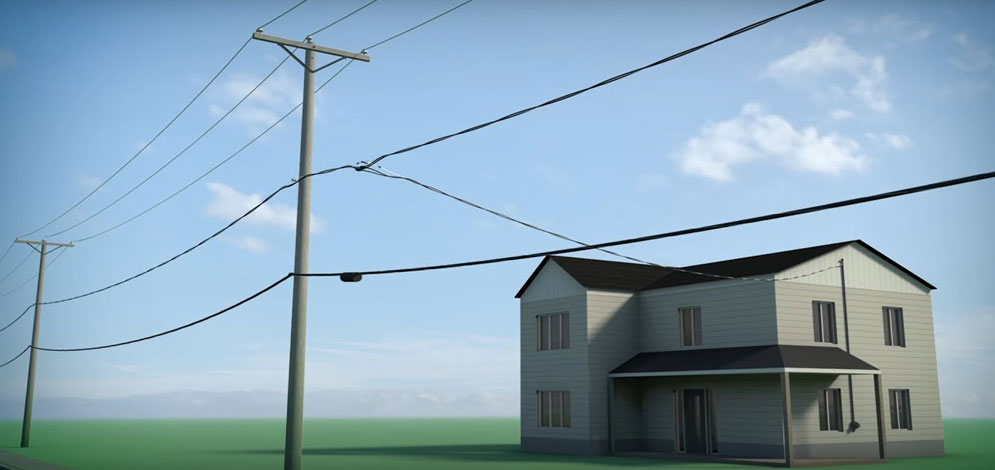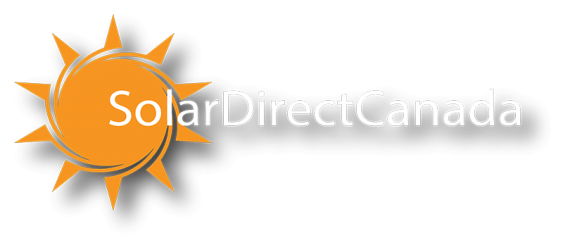Comparing real-life scenarios can provide clarity when deciding whether to invest in solar panels. Let’s examine the experiences of two homeowners to understand the financial impact of installing solar panels.
Homeowner A: Hydro Electricity Customer
Homeowner A uses 16,000 kWh of electricity annually, resulting in a total yearly bill of approximately $2,750, or around $230 per month. This bill includes a fixed monthly charge of about $40, which means the variable portion of their monthly bill that they could potentially save by generating their own electricity is around $190.
The Decision Not to Invest in Solar Panels:
Homeowner A decides against investing in solar panels and chooses instead to continue relying entirely on the grid for their electricity needs. This decision means:
Immediate Costs: Homeowner A’s monthly electricity bill remains at $230.
Rising Costs: Over time, Homeowner A’s electricity costs are expected to increase due to a realistic annual energy inflation rate of 5%.
No Long-Term Savings: Without solar panels, Homeowner A does not benefit from any reduction in electricity costs or financial returns on an investment.
By not investing in solar panels, Homeowner A remains subject to fluctuations and increases in electricity prices, which can lead to higher costs over time.

Homeowner B: The Solar Panel Investor
In a similar situation, Homeowner B decides to invest in solar energy. Solar Direct Canada designs and installs a custom system for Homeowner B, comprising 14.5 kW of solar panels and a 9 kW inverter. This system, larger than the average residential setup, generates an estimated 15,900 kWh annually, effectively covering Homeowner B’s electricity needs.
Even before factoring in incentives, Homeowner B achieves a financial return of 8.6% (30-year IRR) or 5.9% (20-year IRR). Additionally, these returns are tax-free since the savings are not considered income.
Homeowner B takes advantage of the Canada Greener Homes Loan, an interest-free loan of up to $40,000 over ten years. Without the loan, the system would have cost $32,750 plus HST, totaling approximately $37,000. With the loan, Homeowner B’s annual payments are $3,700, or just under $310 per month.

Comparing Monthly Payments
- Homeowner A: Continues to pay $230/month for electricity, with this cost increasing annually due to energy inflation (assumed at 5% per year).
- Homeowner B: Initially pays $310/month for the loan plus $40/month for the fixed portion of the electricity bill totalling $350/month. The $310/month loan payment remains constant and ends after ten years. Post loan repayment, Homeowner B’s monthly variable electricity cost drops to nearly $0 and the only remaining payment is the fixed monthly fee of approximately $40..
Long-Term Savings
- At the 10-Year Mark: The variable portion of Homeowner A’s monthly electricity bill has risen to approximately $375.
- At the 13-Year Mark: Homeowner A pays over $430/month, while Homeowner B enjoys free electricity, having fully covered the loan payments through their savings.
Key Takeaways
- Homeowner A faces rising electricity costs without any long-term savings.
- Homeowner B invests in solar panels, stabilizes their monthly payments, and virtually eliminates their electricity bill, achieving significant long-term savings.
- Homeowner B is slightly worse off in the short term due to the Loan Payments, but the electricity savings cover most of the purchase cost of the system thanks to the interest free loan.
- After 30 years, Homeowner B is nearly $100,000 better off than Homeowner A (See Graph Below).

Investing in solar panels offers substantial financial benefits and protects against the escalating costs of traditional energy sources. Homeowner B’s story demonstrates the potential for considerable savings and a stable, predictable energy cost for the future.
Note: Calculations are based on $0.14/kWh in total variable charges and an assumed annual energy inflation rate of 5%. Financial modeling accounts for panel efficiency degradation of 0.5% per year.
Optimize your energy costs and secure your financial future by considering an investment in solar panels today.
GET A FREE SOLAR PANEL CONSULTATION
Speak to Ontario’s solar panel experts, who have been installing residential and commercial solar since 1990.



